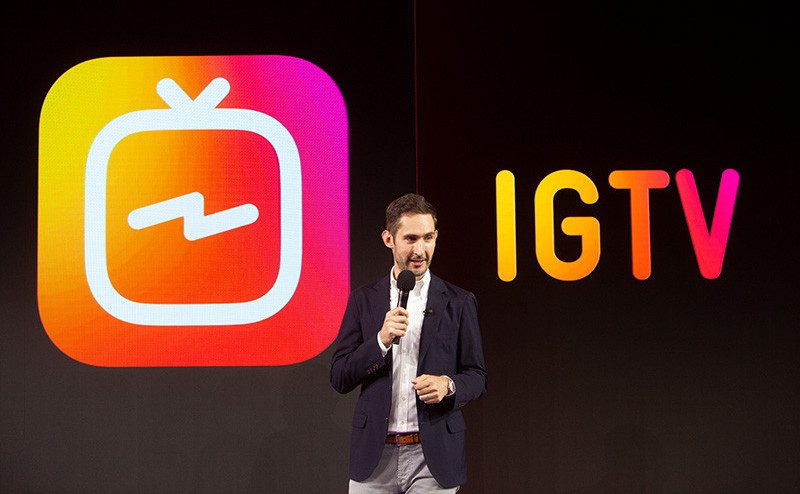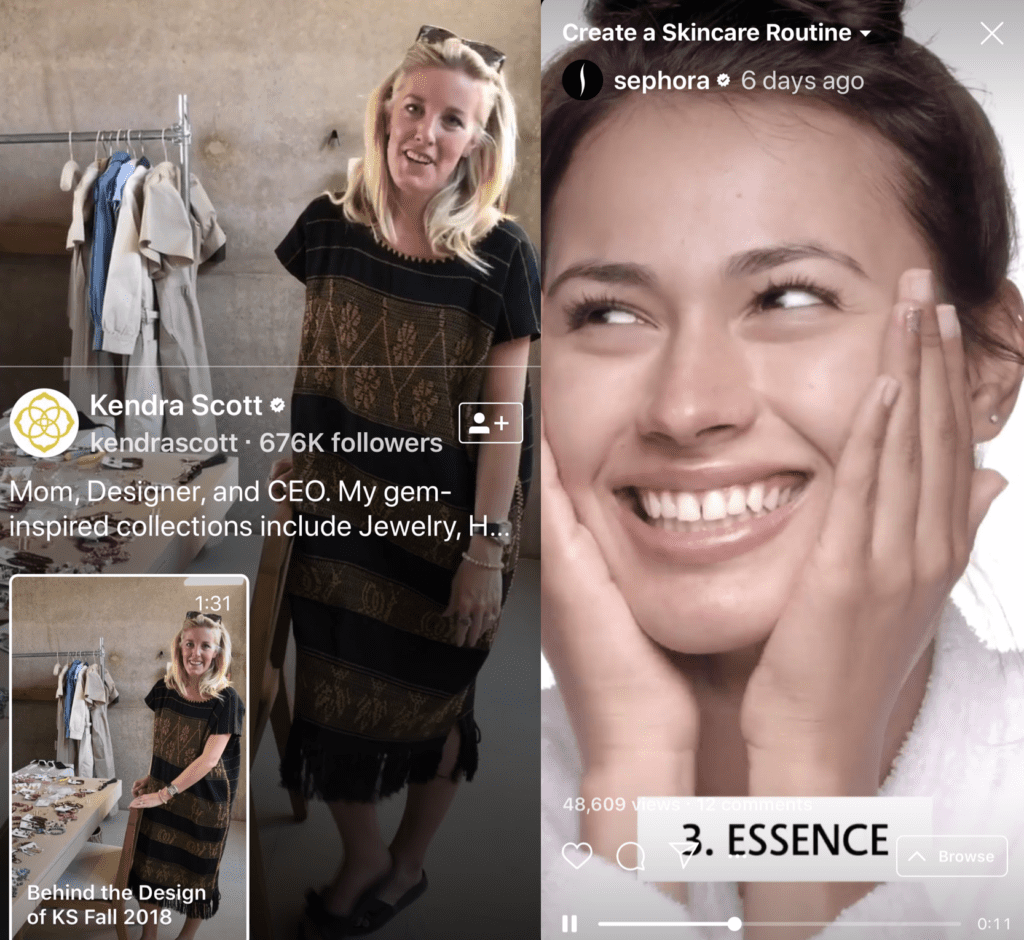Sometimes businesses stay successful by defying expectations. A case in point: Instagram’s recently launched IGTV feature. At a time when goldfish have longer attention spans than human beings, Instagram wants its one billion monthly users to spend more time watching longer-form video.
What Is IGTV?
IGTV makes it possible for users (both businesses and people) to upload video content for up to one hour in length, a dramatic change from the one-minute ceiling that Instagram used to impose on video content posted in the main feed of an account. Instagram understands that even though we have short attention spans, people also reward compelling stories. And businesses are already jumping on the opportunity.
The Mobile-First Platform
As Instagram CEO Kevin Systrom announced on June 20, IGTV is engineered for mobile phones. In other words, the format is optimized for uploading and watching content on a vertical full screen, the way people naturally watch content on their mobile phones. As Instagram noted on its own site, by 2021, mobile video will account for 78 percent of total mobile data traffic, but recording video on mobile phones remains a somewhat clumsy experience. By being mobile-first, IGTV wants to be the go-to resource.
How to Use IGTV
It’s easy to use IGTV. You simply tap on a television icon at the top of your screen and follow the prompts to start recording video. In addition, the icon leads you to content that others have created. You can view what’s popular, who you are following, or what Instagram suggests for you. The videos appear like Instagram stories, but the videos last much longer than stories do. Users cannot livestream on IGTV, though.
How Brands Are Using IGTV
IGTV is not an advertising format – for now. The time may come soon when businesses can create bumper ads or banner ads as they can on YouTube. Meanwhile, businesses are already creating content by setting up their own channels similar to the Snapchat approach. IGTV has been especially attractive to media/entertainment brands. The BBC is posting informational content such as an overview of plastics done with amusing Monty Python style graphics. Guns N’ Roses has been uploading scenes from the band’s concerts, such as soundchecks and an inside look at what it’s like for the band to take the stage before a concert. Shira Lazar, who hosts her own internet show, has been sharing you-are-there segments from her travels to events such as VidCon. The content ranges from organic to very slick. More examples include:
- Health/nutritional/cooking brands and influencers such as Vital Proteins are posting instructional videos on workouts, recipes, and nutritional facts.
- Make-up brands are showing how-to videos for their products. For example, Sephora shows skin care routines and how to apply certain products.
- Clothing/Jewelry brands such as Kendra Scott and Red Dress Boutique are posting behind-the-scenes/sneak peaks of their new collections. Kendra Scott recently gave a behind-the-scenes tour of its new jewelry collection. Red Dress recently took viewers behind the scenes of a photo shoot for new arrivals.
It’s also not uncommon to see businesses posting content they had posted already on YouTube. But brands need to be careful: if your YouTube content is not optimized for mobile viewing, it may render poorly on IGTV.
Influencers on IGTV
IGTV has given influencers another channel to share their content. For example, I have noticed influencers are turning their online blog posts into “interviews” where they basically post a video that describes their blog post for that day. In fact, Instagram has called out IGTV’s potential for helping individual content creators become stars as they have done on YouTube.
“[W]e’ve learned that younger audiences are spending more time with amateur content creators and less time with professionals,” Instagram noted on its blog. Instagram indicated that IGTV will connect users with more individual content creators. But clearly, IGTV has quickly become a format for businesses based on my early experiences.
What Brands Should Do about IGTV
To capitalize on the value of IGTV, I suggest brands do the following:
- If you are creating video content already on channels such as Snapchat and YouTube (or Instagram for short-form video), start using IGTV, especially if you want to connect with the mobile generation. The fact that Instagram now has one billion monthly users should be reason enough for IGTV to get your attention.
- As noted, be careful about how you re-purpose video created on other channels. Re-purpose content that has been optimized for mobile viewing.
- Use the launch of IGTV to examine your influencer strategy. As we have noted on our blog, influencer outreach is getting bigger as brands look for ways to circumvent their content being marginalized by Facebook algorithms. IGTV creates more outlets for influencers and brands to collaborate.
- Learn from others. Do an audit on all the content exploding across IGTV. Don’t limit yourself to businesses in your own industry. Look for businesses that are already doing a great job posting long-form content that tells a visual story.
Finally, watch IGTV closely for opportunities to advertise. It’s only a matter of time before Instagram opens up the platform for advertising. First things first: get comfortable creating content on IGTV, and get ready to engage your audience. Contact True Interactive for more insight into how to use apps such as IGTV to create more engagement.

